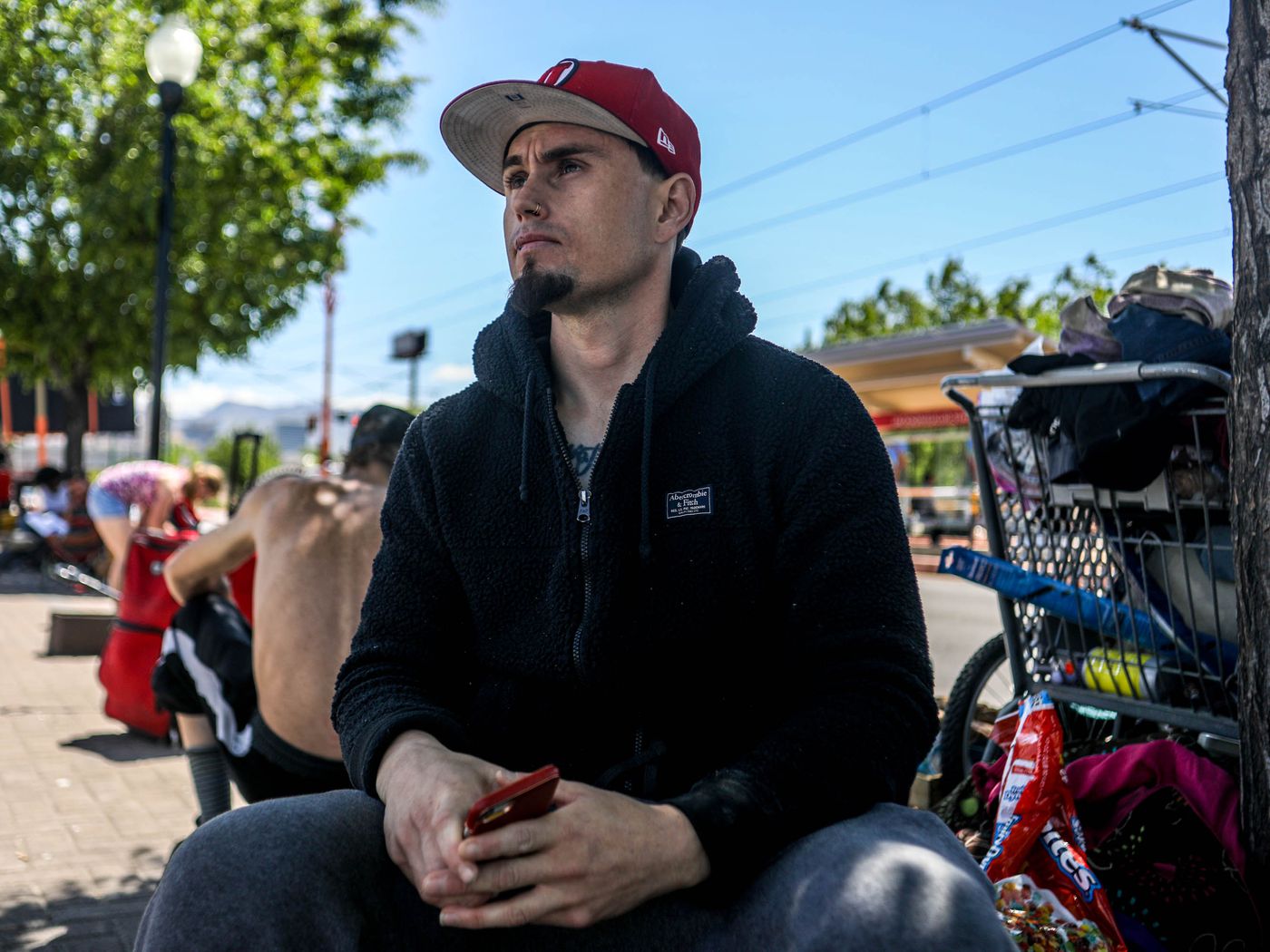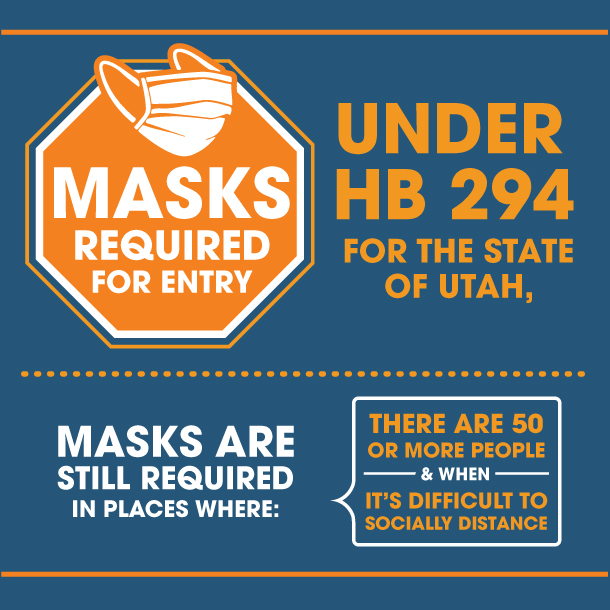PROVO, Utah – When state auditors recently visited the Men’s Resource Center in South Salt Lake, accompanying police officers said they could smell the burning scent of the chemical-laced drug Spice.
“When we entered the facility and went into (the) courtyard area,” James Behunin told an audit subcommittee of state lawmakers on Monday, “we observed someone passed out apparently from the effects of Spice.”
Behunin, senior audit supervisor, said they also saw a shelter resident suddenly become “nervous” and throw an item in the garbage after seeing the officers. On a screen for lawmakers to see, Behunin presented a photo of what had been tossed away: a pipe.
“Mind you, this is a secure area after they’ve passed through the screening process,” he said.
Drugs and drug use are still a problem inside Salt Lake County’s three new homeless resource centers, according to one of the conclusions state auditors made in a follow-up audit published Monday. A scathing audit of the homeless system in 2018 found serious health and safety concerns, including a pervasive presence of drugs, especially inside the Road Home’s downtown shelter, which has since been torn down and replaced by the over $63 million homeless resource centers.
But that’s not unexpected, Behunin said, because drug use will likely continue to be an “ongoing challenge” given “the population that they serve.”
By and large, auditors credited the new homeless resource centers and their providers for vast improvements over the past three years.
“Our conclusion, overall, is that the safety and security have improved at the homeless resource centers,” Behunin said.
Still, that doesn’t mean there aren’t issues to address.
“Although we believe things have improved, we still found some problems with drug use, theft, assault and other kinds of criminal activity in the resource centers,” Behunin said, while also adding it’s “important to recognize” most of the resource centers’ residents suffer from drug addiction, mental illness or have extensive criminal records.
“And that’s why it’s unlikely that the resource centers will ever be entirely free of guests who do their best to get drugs into the facility, who, for whatever reason are engaging in other criminal activity within the resource centers.”
Still, auditors recommended the homeless resource centers do more, including using drug-sniffing dogs, increased security and staffing, and stricter enforcement of their no drugs policy. That includes using what auditors said resource centers “rarely apply’: a “recommended 30-day eviction policy when drug use is found” within the resource centers.
Additionally, the audit stated “many residents are languishing in the resource centers because they refuse such services” or because there isn’t space in drug or mental health treatment programs.
‘Same faces’ returning to centers
Roberto Magana, 32, who said he came to Salt Lake City’s downtown area on Tuesday to check on a relative struggling with mental illness and addiction, told the Deseret News he’d also struggled with a heroin addiction and homelessness off and on since about 2011.
He said he’s recently been able to turn a corner after a doctor prescribed him an opioid blocker to help him start managing his addiction, and after he “fell in love” with a woman who helps support and motivate him. While he said he’s not living on the streets anymore, he still worries about his relative.
Three days ago, Magana said, he saw him on the streets again after he went into a detox program, “and my heart dropped.” Not long after, Magana said he had used Narcan to save him from an overdose.
To Magana, Utah’s homeless system continues to face the same problems plaguing the Road Home’s downtown shelter before it was demolished.
“It’s the same people. The same thing going on.”
While Magana acknowledges he is seeing more people “getting treatment and getting help,” he ends up “seeing them right back out here.”
“So, I mean it’s not as big — the (drug) market isn’t as good as it was, it’s kind of working, but it’s still here.”
Told about the audit’s findings about drug use as residents “languish” without enough capacity for treatment, Magana said he agreed.
“It’s the same faces. The same people,” he said. “I don’t know exactly what it is, but I can say it has worked to a degree, temporarily. But in the long run? I don’t think it’s making much difference.”
New state coordinator looks at next steps
Utah’s new homeless services coordinator, former Senate President Wayne Niederhauser, told the Deseret News in an interview on Tuesday that when he was initially briefed on the latest audit, he was “bracing” himself for bad news like what came out of the last audit three years ago.
“The first audit was pretty serious. It showed a lot of flaws in the system. But it has improved significantly,” Niederhauser said.
While the audit showed drugs continue to be an issue that needs to be addressed, Niederhauser said it also showed the resource centers are “so much better.”
“Now, there are some things that could be done better,” Niederhauser acknowledged. “But in my opinion, based on what the audit exhibited, they’re doing a much better job — at least a good job with respect to safety and security in the resource centers.”
Not acknowledging those positive strides, Niederhauser said, “would do the whole system injustice.”
“We should applaud that and work to even be better by addressing the recommendations of the audit,” he said, adding that his office, the state’s yet-to-be established homeless council, and homeless providers will all work together to “make sure those recommendations are implemented.”
Niederhauser said Utah’s homeless problem is a “difficult situation. And it’s going to take our best thinking, our best innovation and our best implementation of best practices to make a difference.”
What the audit and his own “discovery” is finding, Niederhauser said, is that the real “bottleneck” isn’t the homeless resource centers, but the programs outside of those centers such as housing, drug treatment or mental health treatment.
“What happens after the resource center is more of a problem than what’s happening in the resource center,” he said. “That’s where our bottleneck is, is moving people on to stable housing, to detox to treatments, whether it’s for mental illness or drug addiction. That seems to be the bottleneck at this point.”
Niederhauser said he’ll continue his “discovery process” — visiting shelters and other facilities throughout the state — and work with the state’s future homeless council to figure out “what we should do to relieve” that bottleneck.
Expect more to come, Niederhauser said, noting that state auditors are also working on another audit to give a more “30,000-foot look” at the state’s entire homeless system and how it is or isn’t working.
House Minority Leader Brian King, D-Salt Lake City, asked Behunin whether auditors evaluated whether the resources provided to the centers are enough to address needs. Behunin said that’s part of the larger audit in the works and expected to be finished later this year. It evaluates “global issues, strategic planning” and if Utah is “getting the best bang for our buck.”
Laurie Hopkins, executive director of Shelter the Homeless, the nonprofit that owns the resource centers, said the centers’ service providers agreed with many of the audit’s findings, saying now is a good time to review their policies and procedures.
“We welcome the auditors’ recommendations. We’re working to address each one, and we’re ready to refine our approach to best serve this community,” Hopkins said.
Overall, Hopkins said the audit shows the homeless resource center system is “serving individuals experiencing homelessness with a healthy, safe and secure environment.”
“Progress has been strong over the last three years,” she said, “and we will continue to work to improve the model and the services provided, as time goes on.”






